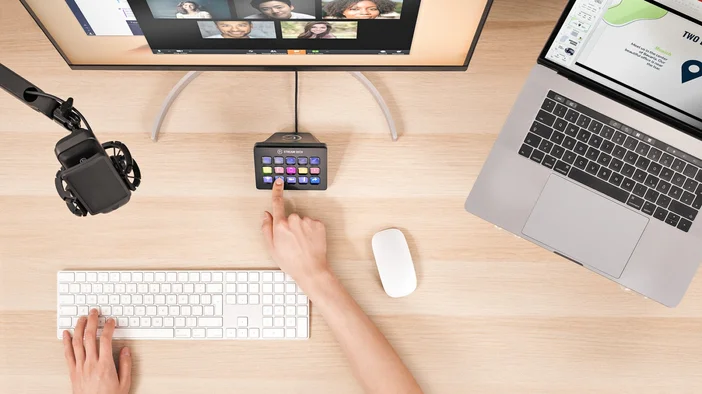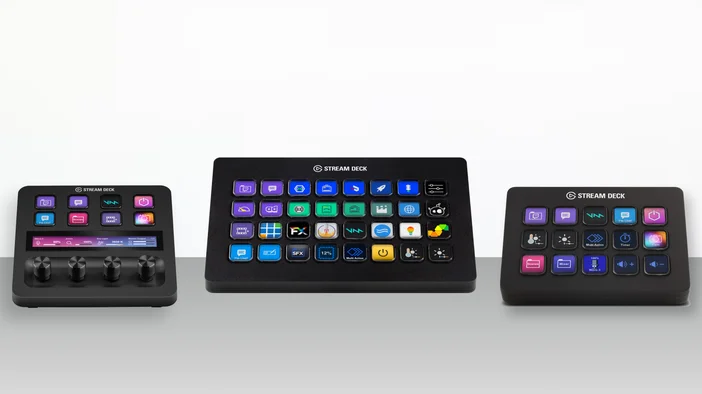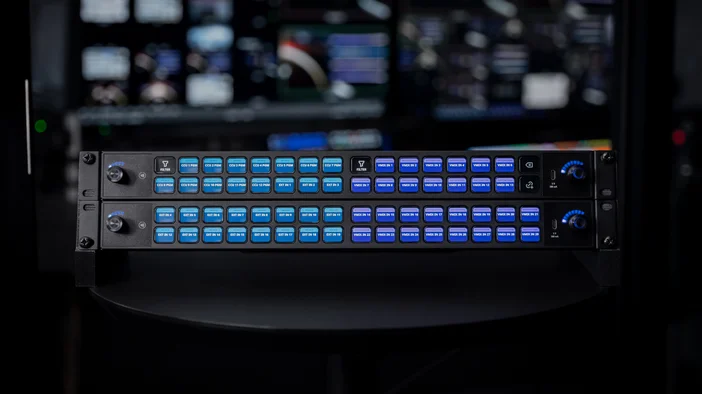How To
How to deploy Elgato Stream Deck Profiles at Scale: A Guide for IT and Production Teams
Last updated:
Elgato Stream Decks offer powerful, customizable control over production tools, broadcast software, and macro workflows. Consistency is key in professional or enterprise environments. With the right tools and knowledge, you can deploy preset configurations across AV systems or default Stream Deck profiles across multiple machines and users.
Here’s how to roll out standardized Stream Deck profiles across a large deployment using a custom default profile path.
Requirements
- A Stream Deck device
- Stream Deck software
- Windows 11 or macOS 13 Ventura

Step 1: Build Your Custom Default Profile
Before deployment, create a master profile tailored for each Stream Deck model you intend to deploy (e.g., Stream Deck XL, Stream Deck+, Stream Deck MK.2, etc.). Each profile must be device-specific, as layouts and button mappings differ across models.
To create your default profile:
1. Open the Stream Deck app.
2. Configure the profile with the necessary icons, actions, and pages.
3. Export the profile:
- Go to Preferences > Profiles, right-click your profile, and select Export.
4. Depending on your device, adjust the name of the profile file such as:
- Stream Deck: StreamDeck.streamDeckProfile
- Stream Deck Neo: StreamDeckNeo.streamDeckProfile
- Stream Deck Mini: StreamDeckMini.streamDeckProfile
- Stream Deck XL: StreamDeckXL.streamDeckProfile
- Stream Deck +: StreamDeckPlus.streamDeckProfile

Step 2: Host the Profile in a Central Location
For efficient distribution, especially across a local network or domain:
- Place the .streamDeckProfile file in a network-accessible folder (e.g., \\CompanyNetwork\ElgatoProfiles\StreamDeckXL).
- Alternatively, copy it to a consistent local path on each machine (e.g., C:\StreamDeck\DefaultProfiles\).
Each client system will reference this location to install the default profile.
Step 3: Configure Stream Deck to Use the Custom Profile Path
Depending on the operating system, you'll need to define a custom profile folder path:
Windows Setup
1. Close Stream Deck software.
2. Open the Registry Editor.
3. Navigate to: HKEY_CURRENT_USER\Software\Elgato Systems GmbH\StreamDeck
4. Create a new String Value:
- Name: custom_default_profiles
- Value: File path to the profile folder (e.g., C:\StreamDeck\DefaultProfiles or network path).
macOS Setup
1. Close Stream Deck software.
2. Open Terminal.
3. Enter the following command: defaults write com.elgato.StreamDeck custom_default_profiles /tmp/my_default_profiles
- -Replace /tmp/my_default_profiles with your actual folder path.
Step 4: Refresh Profile State on Each Machine
Once the custom path is set, prep each Stream Deck device to accept the new profile.
On every target machine:
1. Close the Stream Deck application.
2. Navigate to the Stream Deck user data folder:
- Windows:
- C:\Users\[Username]\AppData\Roaming\Elgato\StreamDeck
- macOS:
- /Users/[Username]/Library/Application Support/com.elgato.StreamDeck
3. Delete the following folders:
- ProfilesV2
- Backup
Launch the Stream Deck application again. It will pull the profile from the designated path and create a new local copy.
Step 5: Scaling to Multiple Users and Devices
For mass deployment:
- Use domain group policy or an RMM tool to automate:
- Registry changes or Terminal commands.
- Profile folder placement.
- Profile folder cleanup.
- Consider deploying via OS imaging or configuration management (e.g., Jamf, SCCM, Intune).
With this approach, every Stream Deck boots with your preconfigured layout, ensuring consistency across workstations, teams, or studio environments.

Final Thoughts
Elgato Stream Deck isn't just for streamers; when deployed strategically, it can be an enterprise-level tool. Whether standardizing AV workflows across a stadium or rolling out unified macros across a video editing suite, this deployment method makes scaling seamless and efficient.
For even deeper integration, Stream Deck Studio and Bitfocus Buttons software can further extend Stream Deck functionality into SDI/IP workflows, KVM switching, SNMP monitoring, and more.
Check out Stream Deck Studio here.
If you're interested in integrating Stream Deck into your workflow, reach out to our B2B team here.
PRODUCTS IN ARTICLE